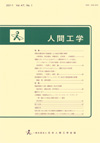
- |<
- <
- 1
- >
- >|
-
2018Volume 54Issue 1 Pages Cover1
Published: February 15, 2018
Released on J-STAGE: May 25, 2024
JOURNAL FREE ACCESSDownload PDF (322K)
-
Atsufumi YOSHIZAWA, Kyoko OBA, Masaharu KITAMURA2018Volume 54Issue 1 Pages 1-13
Published: February 15, 2018
Released on J-STAGE: July 09, 2019
JOURNAL FREE ACCESSThe two approaches as the concepts to ensure safety of the complicated socio-technical systems have been proposed by Hollnagel. They are the safety concepts called “Safety-I” to reduce risks and “Safety-II” to expand successes. The resilience engineering is suggested as the methodology to achieve Safety-II. The study analyzes the recovery of the water injection of Unit 3 based on the resilience engineering, focusing on the fact that Fukushima Daiichi Nuclear Power Plant prevented further deterioration of the accident case, rather than the aspect that it has been evaluated for extracting risk factors. Based on those results, the study clarifies the method of learning to enhance safety which has a different view from existing accident investigation.
View full abstractDownload PDF (1130K) -
Ryosuke NAKAJIMA, Yuuka SUZUKI, Takuya HIDA, Toshiyuki MATSUMOTO2018Volume 54Issue 1 Pages 14-23
Published: February 15, 2018
Released on J-STAGE: July 09, 2019
JOURNAL FREE ACCESSThis study focuses on differences of luminance of an inspection surface due to inspection environment, and considers experimentally the effect of luminance of inspection surface on defect detection in visual inspection utilizing peripheral vision. In the experiment, the luminance of inspection surface, defect locations, and defect characteristics (luminance contrast and size) are designed as experimental factors, and their effect on defect detection rate is evaluated. As a result, it is clarified that the defect detection rate is low in a case that the luminance of the inspection surface is 50 cd/m2 and the rate increases in a case that the luminance is between 100 cd/m2 and 250 cd/m2 regardless of the viewing area where the defect exists. In particular, it is found that the tendency is remarkable in a case that the surface luminance of defect (evaluation index of visibility of defects that was proposed in previous study) is between 0.21 and 0.34. From the above, in order to realize highly accurate visual inspection, it is necessary to control appropriately inspection environment according to the surface luminance of acceptable limit of defect.
View full abstractDownload PDF (724K) -
-Case study of Aircraft Maintenance Works using the Aviation Safety Reporting System-Jiro KOJIMA, Kenichi TAKANO2018Volume 54Issue 1 Pages 24-32
Published: February 15, 2018
Released on J-STAGE: July 09, 2019
JOURNAL FREE ACCESSTo improve air safety and decrease aircraft accident closely to the lowest limit, improvements due to large amount of information acquisition and analysis about incidents or near misses which occurred in daily flights are important to reveal occurrence mechanisms of human errors. As the ASRS (Aviation Safety Reporting System in US), today we have huge data of human errors. We have to use the data not only to study lessons learned but also to continue to obtain new insights.
This paper describe a new methodology to structure the relations between contribution factors to occur human errors in aircraft maintenance works using the Bayesian Network methodology. The first reason using Bayesian Network is that this methodology is graphical model representing causal relationships between contribution factors of human error. The next reason is it could calculate conditional probability of each contribution factors. By using these functions, it is possible to find leverage point to reduce human error. This study could attain contributions to eradication of aircraft accident.
View full abstractDownload PDF (767K)
-
[in Japanese]2018Volume 54Issue 1 Pages 33
Published: February 15, 2018
Released on J-STAGE: May 25, 2024
JOURNAL FREE ACCESSDownload PDF (1275K) -
[in Japanese]2018Volume 54Issue 1 Pages 34-35
Published: February 15, 2018
Released on J-STAGE: May 25, 2024
JOURNAL FREE ACCESSDownload PDF (4849K)
-
[in Japanese], [in Japanese]2018Volume 54Issue 1 Pages 36
Published: February 15, 2018
Released on J-STAGE: May 25, 2024
JOURNAL FREE ACCESSDownload PDF (825K)
-
2018Volume 54Issue 1 Pages Notice1-Notice3
Published: February 15, 2018
Released on J-STAGE: May 25, 2024
JOURNAL FREE ACCESSDownload PDF (582K) -
2018Volume 54Issue 1 Pages Notice5-Notice10
Published: February 15, 2018
Released on J-STAGE: May 25, 2024
JOURNAL FREE ACCESSDownload PDF (634K) -
2018Volume 54Issue 1 Pages 40
Published: February 15, 2018
Released on J-STAGE: May 25, 2024
JOURNAL FREE ACCESSDownload PDF (682K) -
2018Volume 54Issue 1 Pages App1-
Published: February 15, 2018
Released on J-STAGE: May 25, 2024
JOURNAL FREE ACCESSDownload PDF (675K)
-
2018Volume 54Issue 1 Pages Cover2
Published: February 15, 2018
Released on J-STAGE: May 25, 2024
JOURNAL FREE ACCESSDownload PDF (181K)
- |<
- <
- 1
- >
- >|